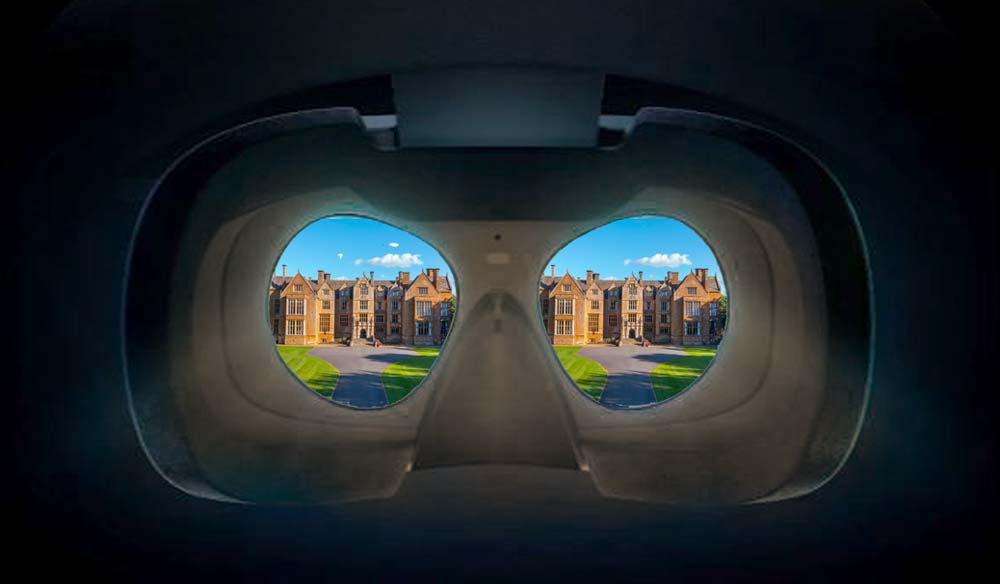The conventional virtual tour presents the user-navigable VR space on the screen of a computer or hand-held device. The user sees this as a narrow segment of their visual environment, and must stare at the screen and interact with it by using a mouse, or by dragging on the screen with a finger.
The head-mounted display (HMD), on the other hand, completely dominates the visual field of the user. It therefore isolates them from the distractions of the actual physical environment and encompasses the entire field of view, including the peripheral visual space, with the virtual-reality experience. Navigation is immediate and intuitive; move your head and/or rotate your body to explore the 360° virtual space.
Using a Head-Mounted Display
If you have a HMD device such as the Meta Quest, or the Apple Vision Pro, or one of their competitors, you will be able to access the virtual-reality tour of Wroxton Abbey using its built-in WebXR-compliant browser. With a head-mounted display, as you turn your head, or rotate while sitting in a swivel chair, the VR tour will fill the 360° space around you.
To view the Virtual Wroxton Abbey using one of these high-end ($400–$600+) headsets is a sensory revelation and the most immersive way to experience the Abbey short of taking a taxi from Banbury. If you own one of these devices, or know someone—perhaps a gamer—or if you are able to access one at your local library or college campus, you are in for a visual treat.



